THE SINGERS TOOLKIT
An Incomplete Guide for Baffled Choral Singers
Time Values
The appearance of a notes tells HOW LONG IT LASTS compared to other notes (Its TIME VALUE).
A SEMIBREVE (UK)
WHOLE NOTE (US)

lasts as long as two
MINIMS (UK)
HALF NOTES (US)
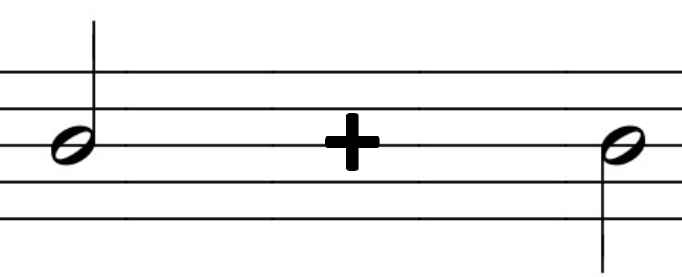
Here is a clip which starts with semibreves and then moves into minims.
A
MINIM lasts as long as two
CROTCHETS (UK)
QUARTER NOTES (US)
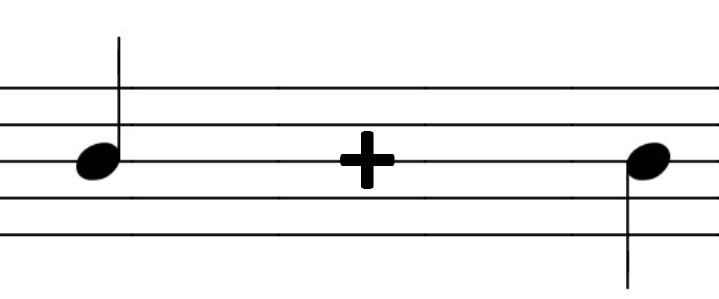
Here is a clip which begins with minims, moves into crotchets, and then ends with a minim.
A
CROTCHET lasts as long as two
QUAVERS (UK)
EIGHTH NOTES (US)
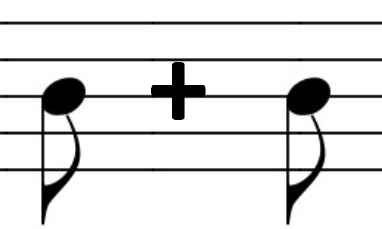
or
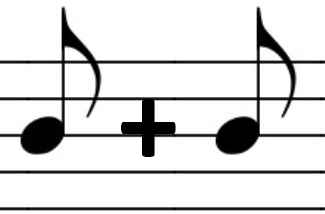
or
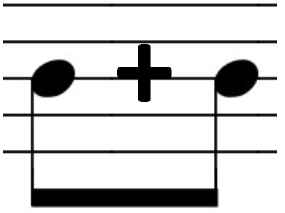
or
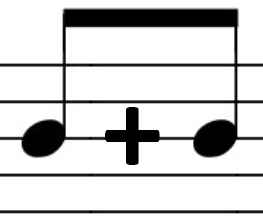
Here is a clip which begins with crotchets, moves into quavers, then ends with a minim.
A
QUAVER lasts as long as two
SEMIQUAVERS (UK)
SIXTEENTH NOTES (US)
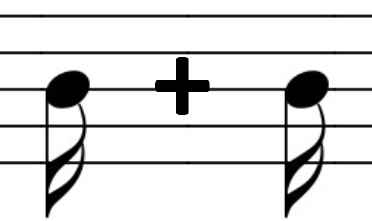
or
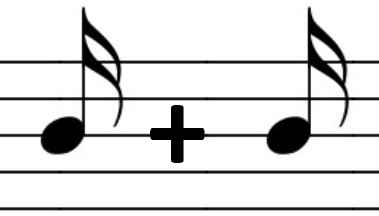
or
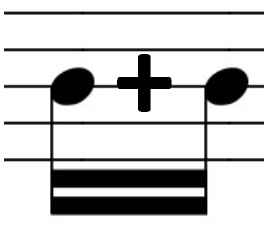
or
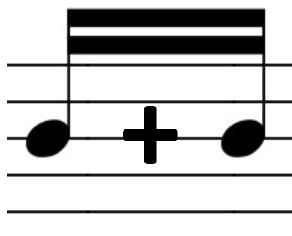
This clip starts in quavers, moves into semiquavers, then ends with a crotchet.
Here is a clip which begins in semibreves, moves into minims, crotchets, quavers, semiquavers, and then ends with a crotchet.
It make no difference to the time value whether the tails point up or down,or whether they are joined or not. The decision to place a tail up/down is done purely for the appearance, or to
distinguish between different parts (soprano or alto, tenor or bass) sharing the same stave.
Watch a VIDEO which contrasts semibreves, minims, and crotchets.
Watch a VIDEO which contrasts crotchets, quavers, and semiquavers.
Return to:
TOP
MENU PAGE of Singers Toolkit
MENU PAGE of Organists Online
Triplets & Duplets
Occasionally, beats are not divided into 2 or 4 but into 3. These are then called TRIPLETS and indicated thus:
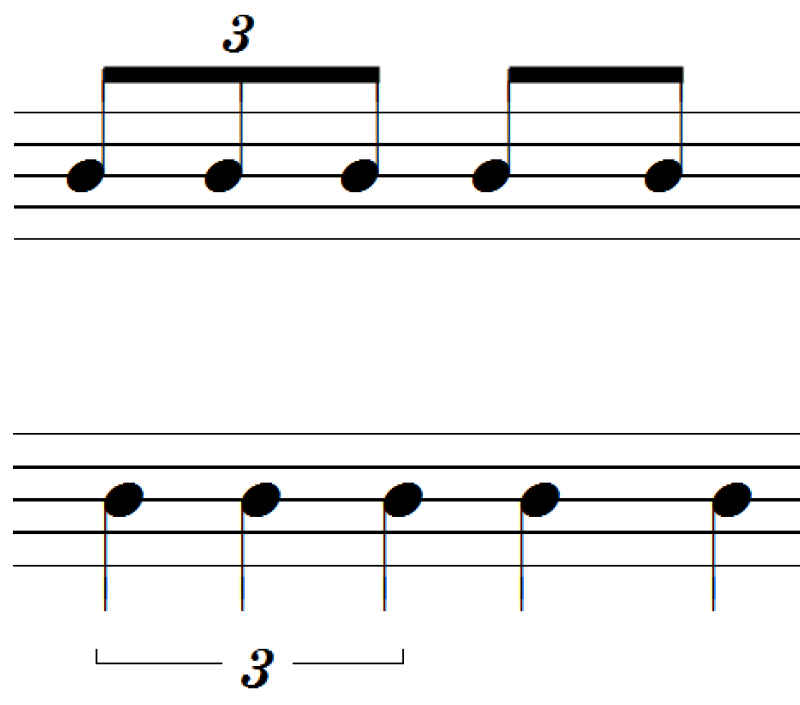 The triplet quavers last as long as two normal quavers, and the triplet crotchets last as long as two normal crotchets
The triplet quavers last as long as two normal quavers, and the triplet crotchets last as long as two normal crotchets
Here is a clip which begins in normal quavers, and then moves into triplets, ending with a crotchet.
Here is a VIDEO with alternates between normal quavers and triplet quavers.
If the basic beat is already divided into 3 (we'll come to this later), it's possible to have a DUPLET, which is two equal notes in the time of three.
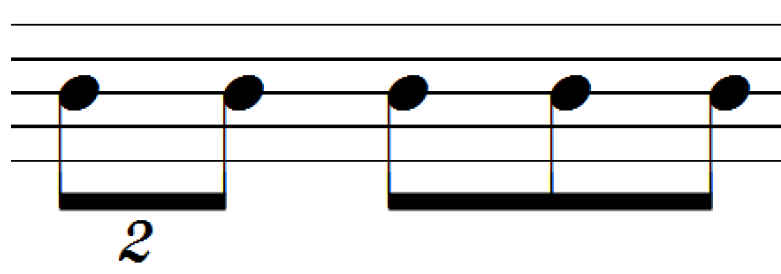
Return to:
TOP
MENU PAGE of Singers Toolkit
MENU PAGE of Organists Online
Ties
Notes can be
TIED together to make a longer note
IF THEY ARE AT THE SAME PITCH (on the same line or space).

You add together the value of each note to get the value of the single tied note.
If they are
NOT AT THE SAME PITCH, they are
SLURS (which mean: sing smoothly.)
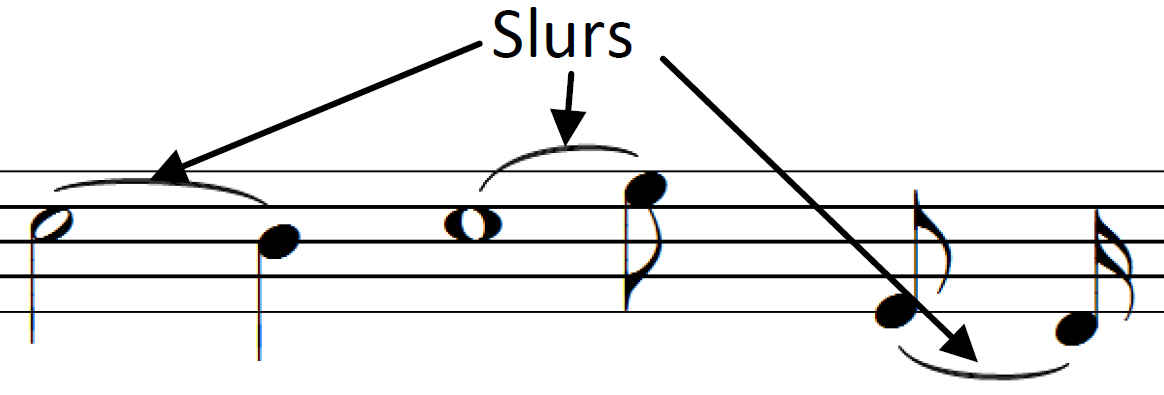
In this VIDEO ties are demonstrated.
Return to:
TOP
MENU PAGE of Singers Toolkit
MENU PAGE of Organists Online
Dots
A
DOT after a note makes it
50% LONGER.


A
DOUBLE DOT makes it 75%
LONGER.


Here is a VIDEO contrasting ordinary crotchets and dotted crotchets/quavers.
And here is another VIDEO showing how dots and ties can produce a similar effect.
Return to:
TOP
MENU PAGE of Singers Toolkit
MENU PAGE of Organists Online
Staccato and Pauses
The sound of a note may be
clipped by a
STACCATO DOT (a bit clipped) or
WEDGE (very clipped - staccatissimo).

This creates little silences between the notes so that the notes still fall on the beat.
Here is a clip which moves from
smooth (legato), to
staccato, to
staccatissimo notes.
It looks like this:

and sounds like this:
Here is a VIDEO contrasting legato, staccato, and staccatissimo.
You will note that, despite staccato and staccatissimo, the beat remains absolutely regular.
.
The amount of clipping is up to the performer. There is no notation which exactly expresses how much staccato.
A note can be lengthened by a
PAUSE (Fermata).
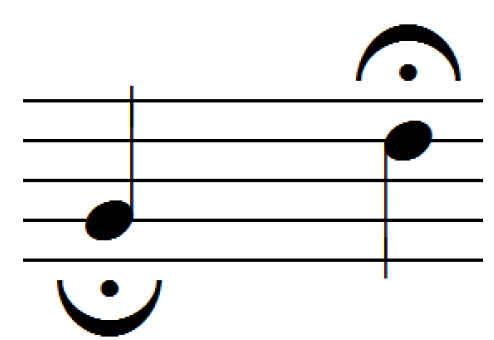
The amount of lengthening is up to the performer or conductor. There is no notation which exactly expresses how much to pause.
Pauses disturb the regular flow of the beats.
Here is a clip with a pause on every fourth note.
It is written like this:
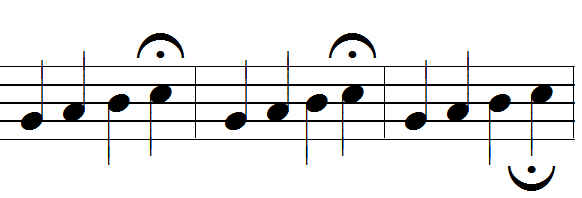
and sounds like this:
Here's a VIDEO showing a pause on each of the last two notes.
Pauses can last a long time (several seconds). It's all up to the conductor or performer/.
Return to:
TOP
MENU PAGE of Singers Toolkit
MENU PAGE of Organists Online
Rests
RESTS are used for
silences. These, too, have time values and can be dotted.
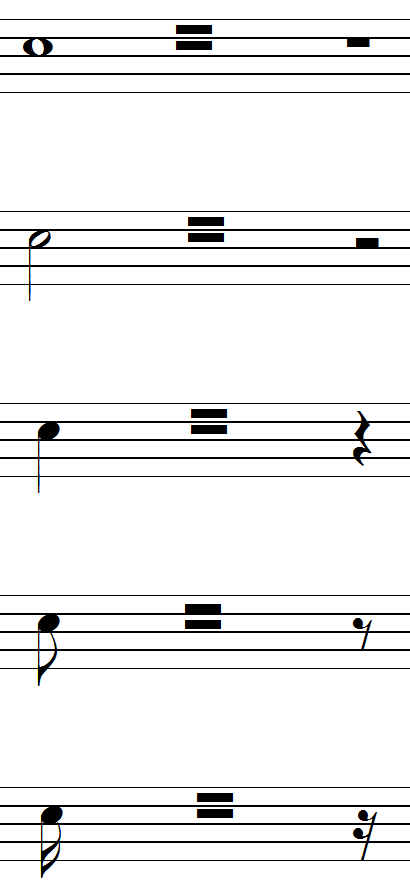
Here is a VIDEO showing rests in action.
And here is another VIDEO showing rests in action.
Return to:
TOP
MENU PAGE of Singers Toolkit
MENU PAGE of Organists Online